Abstract
The inactivation of HEp-2 cell-associated poliovirus (Sabin 1) and coxsackievirus A9 was investigated in three experimental systems, using ozone as a disinfectant. The cell-associated viral samples were adjusted to a turbidity of 5 nephelometric turbidity units. The cell-associated poliovirus and coxsackievirus samples demonstrated survival in a continuous-flow ozonation system at applied ozone dosages of 4.06 and 4.68 mg/liter, respectively, for 30 s. Unassociated viral controls were inactivated by the application of 0.081 mg of ozone per liter for 10 s. Ultrasonic treatment of cell-associated enteric viruses did not increase inactivation of the cell-associated viruses. The batch reactor with a declining ozone residual did not effect total inactivation of either cell-associated enteric virus. These cell-associated viruses were completely inactivated after exposure to ozone in a batch reactor using continuous ozonation. Inactivation of cell-associated poliovirus required a 2-min contact period with an applied ozone dosage of 6.82 mg/liter and a residual ozone concentration of 4.70 mg/liter, whereas the coxsackievirus was completely inactivated after a 5-min exposure to an applied ozone dosage of 4.81 mg/liter with an ozone residual of 2.18 mg/liter. These data indicate that viruses associated with cells or cell fragments are protected from inactivation by ozone concentrations that readily inactivate purified virus. The cell-associated viral samples used in this research contained particles that were 10 to 15 microns in size. Use of a filtration system before ozonation would remove these particles, thereby facilitating inactivation of any remaining viruses associated with cellular fragments.
Full text
PDF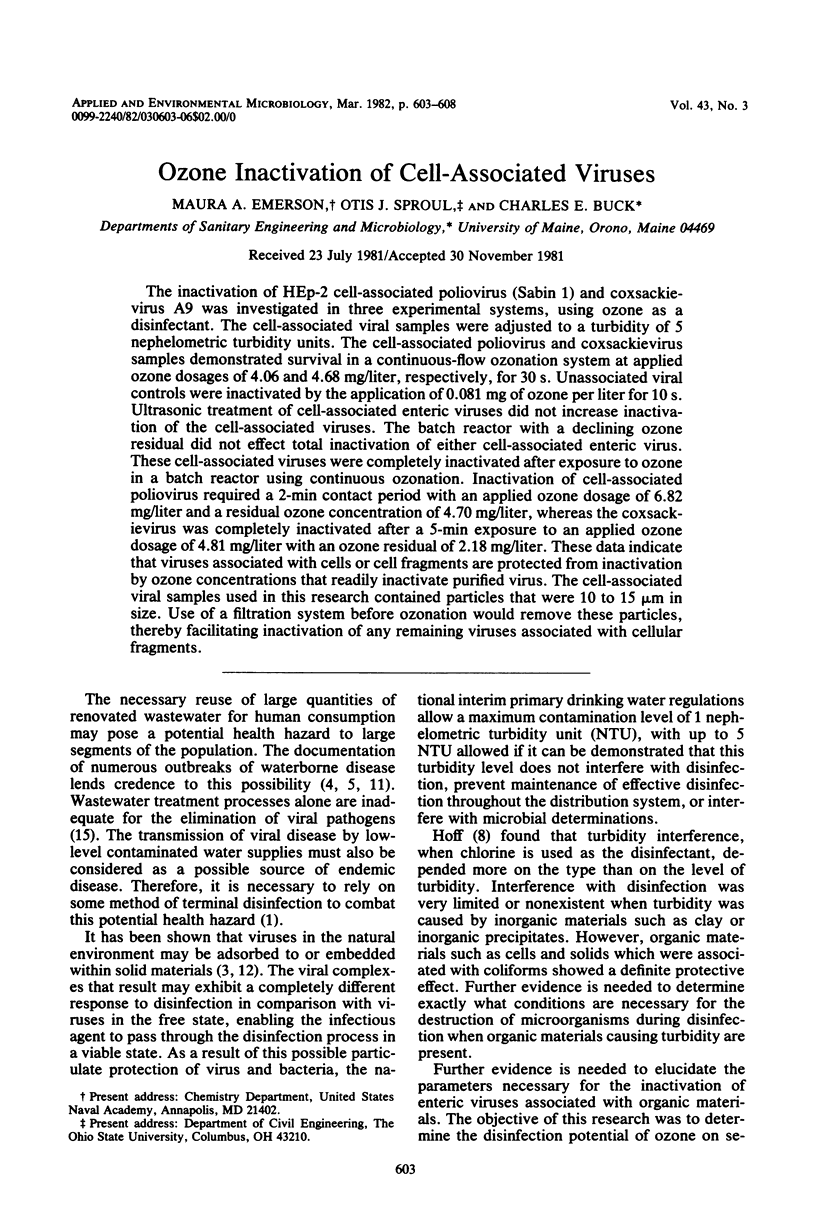

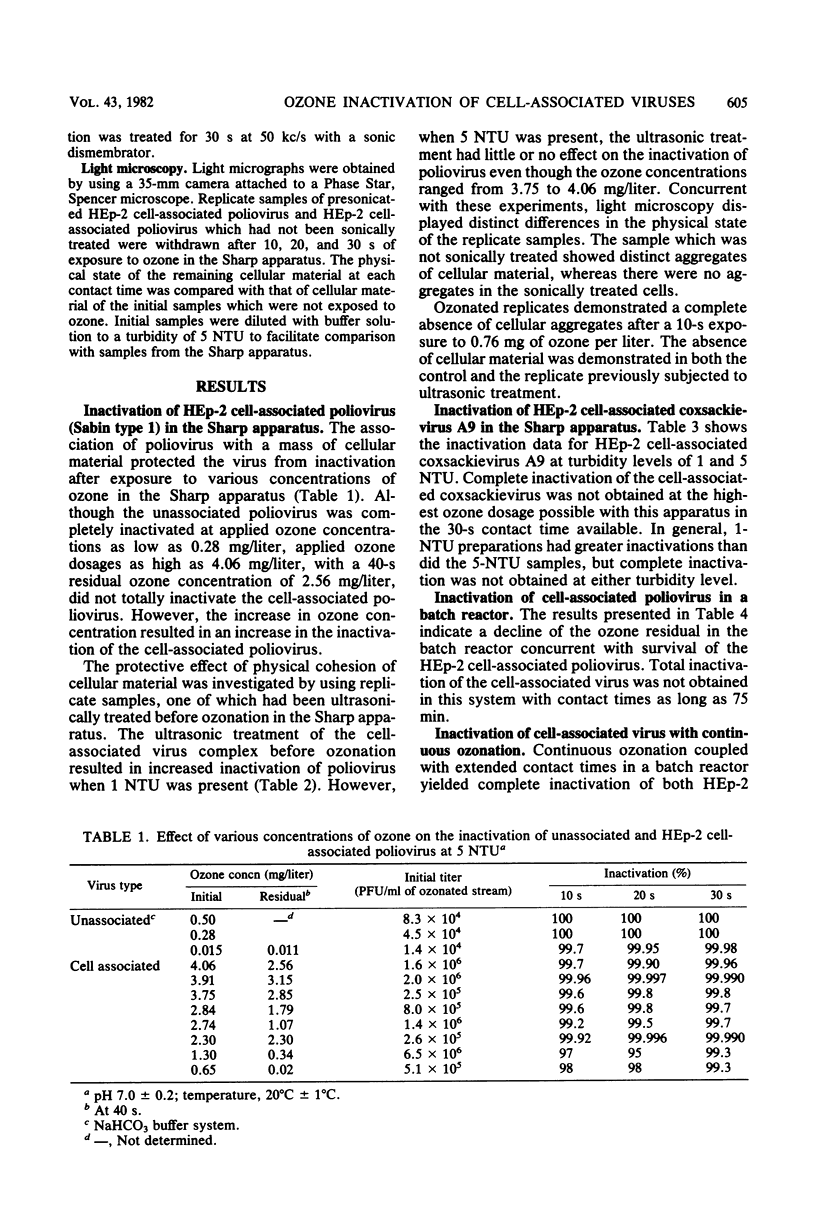
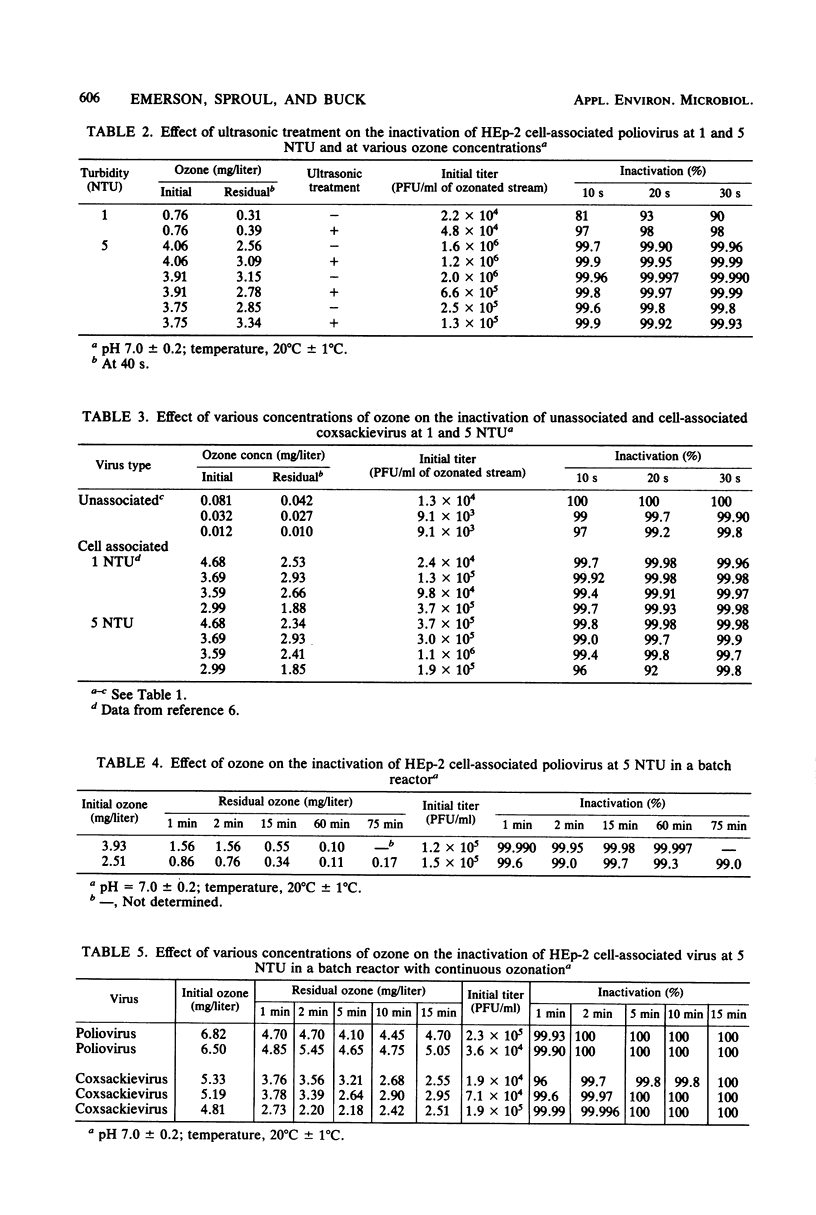
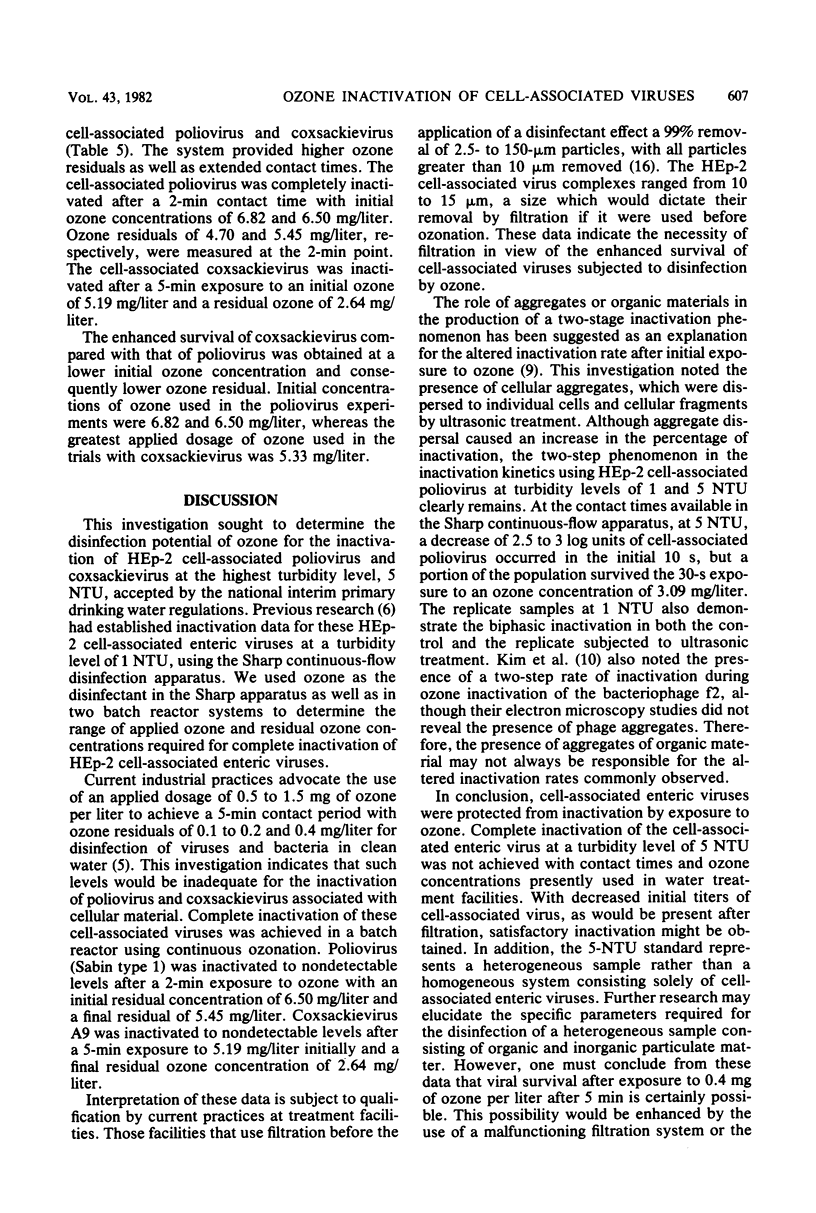
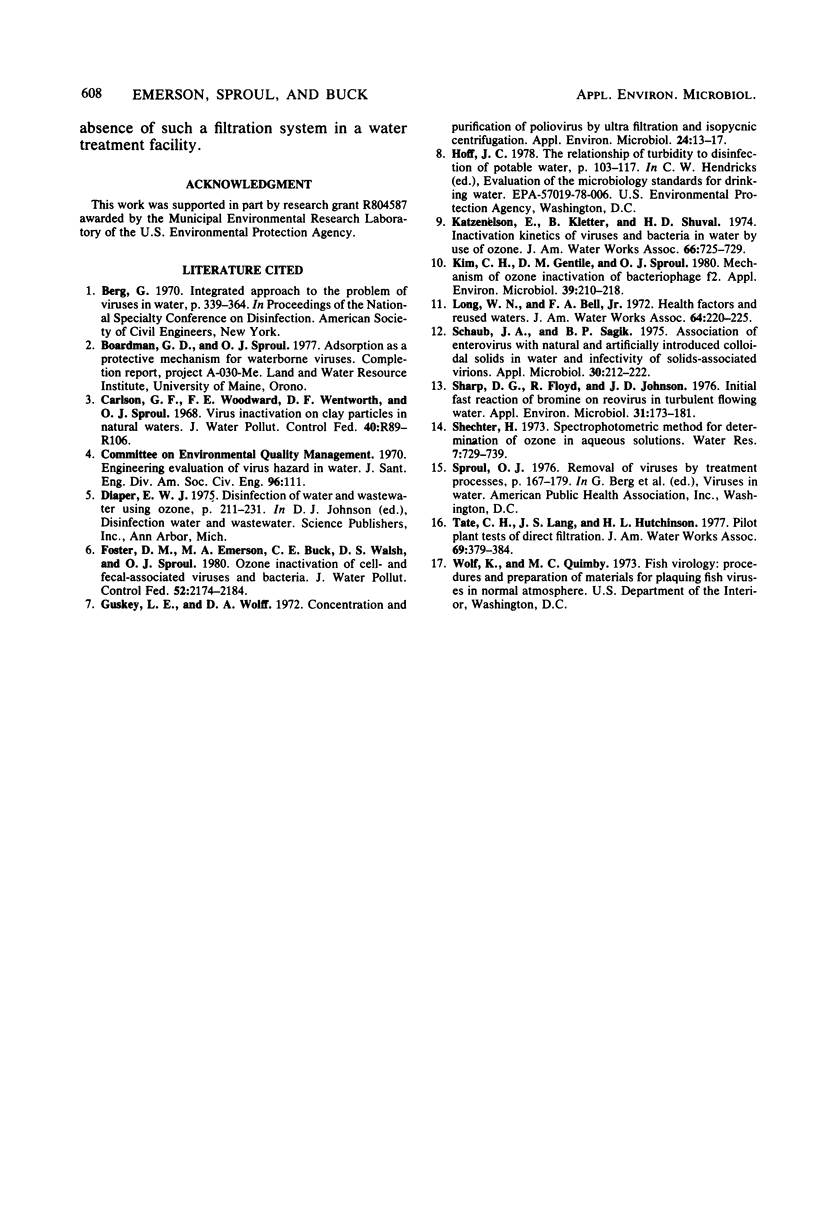
Selected References
These references are in PubMed. This may not be the complete list of references from this article.
- Guskey L. E., Wolff D. A. Concentration and purification of poliovirus by ultrafiltration and isopycnic centrifugation. Appl Microbiol. 1972 Jul;24(1):13–17. doi: 10.1128/am.24.1.13-17.1972. [DOI] [PMC free article] [PubMed] [Google Scholar]
- Kim C. K., Gentile D. M., Sproul O. J. Mechanism of Ozone Inactivation of Bacteriophage f2. Appl Environ Microbiol. 1980 Jan;39(1):210–218. doi: 10.1128/aem.39.1.210-218.1980. [DOI] [PMC free article] [PubMed] [Google Scholar]
- Schaub S. A., Sagik B. P. Association of enteroviruses with natural and artificially introduced colloidal solids in water and infectivity of solids-associated virions. Appl Microbiol. 1975 Aug;30(2):212–222. doi: 10.1128/am.30.2.212-222.1975. [DOI] [PMC free article] [PubMed] [Google Scholar]
- Sharp D. G., Floyd R., Johnson J. D. Initial fast reaction of bromine on reovirus in turbulent flowing water. Appl Environ Microbiol. 1976 Feb;31(2):173–181. doi: 10.1128/aem.31.2.173-181.1976. [DOI] [PMC free article] [PubMed] [Google Scholar]


